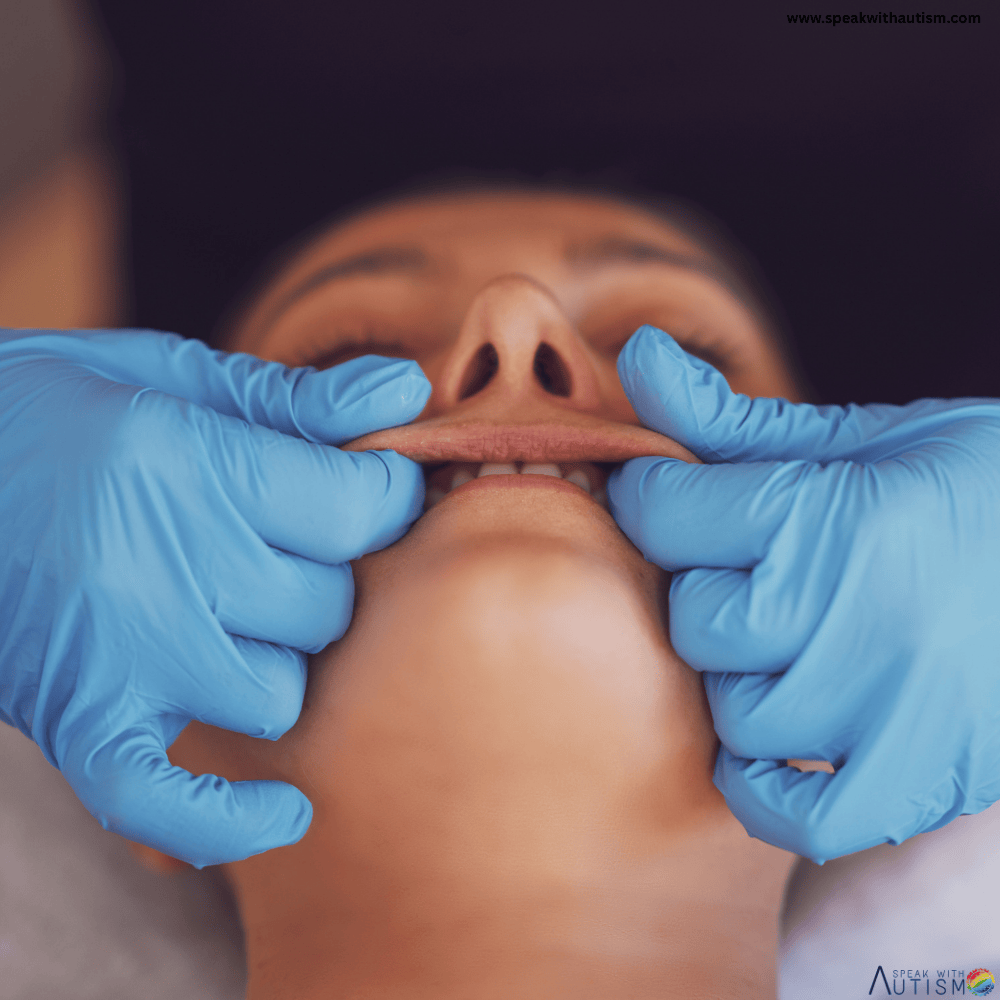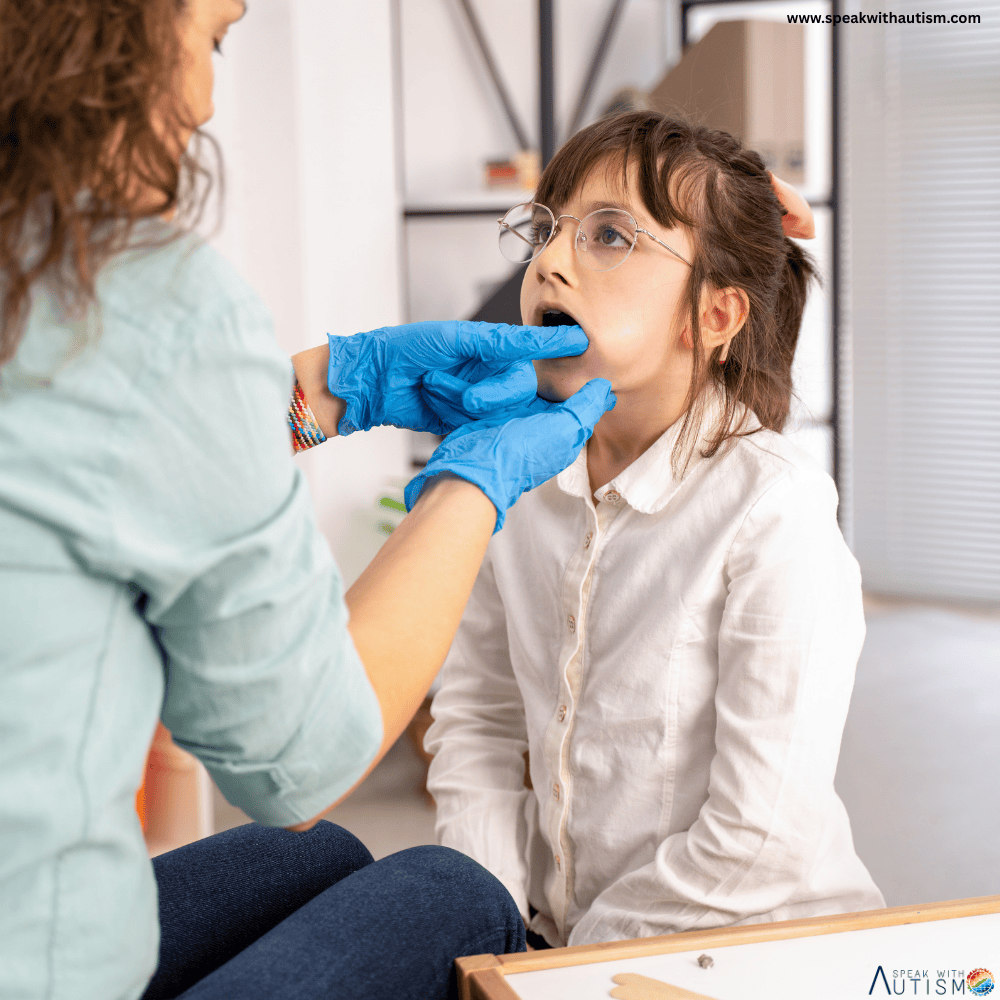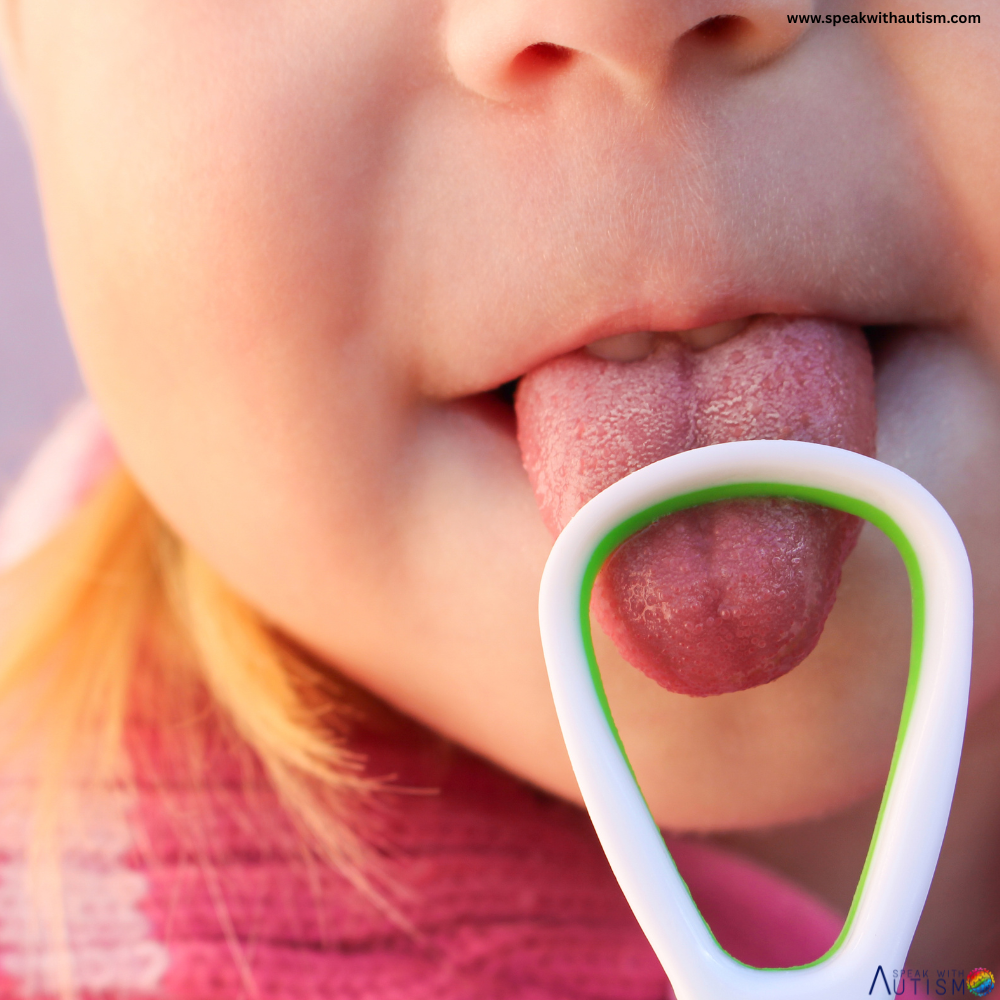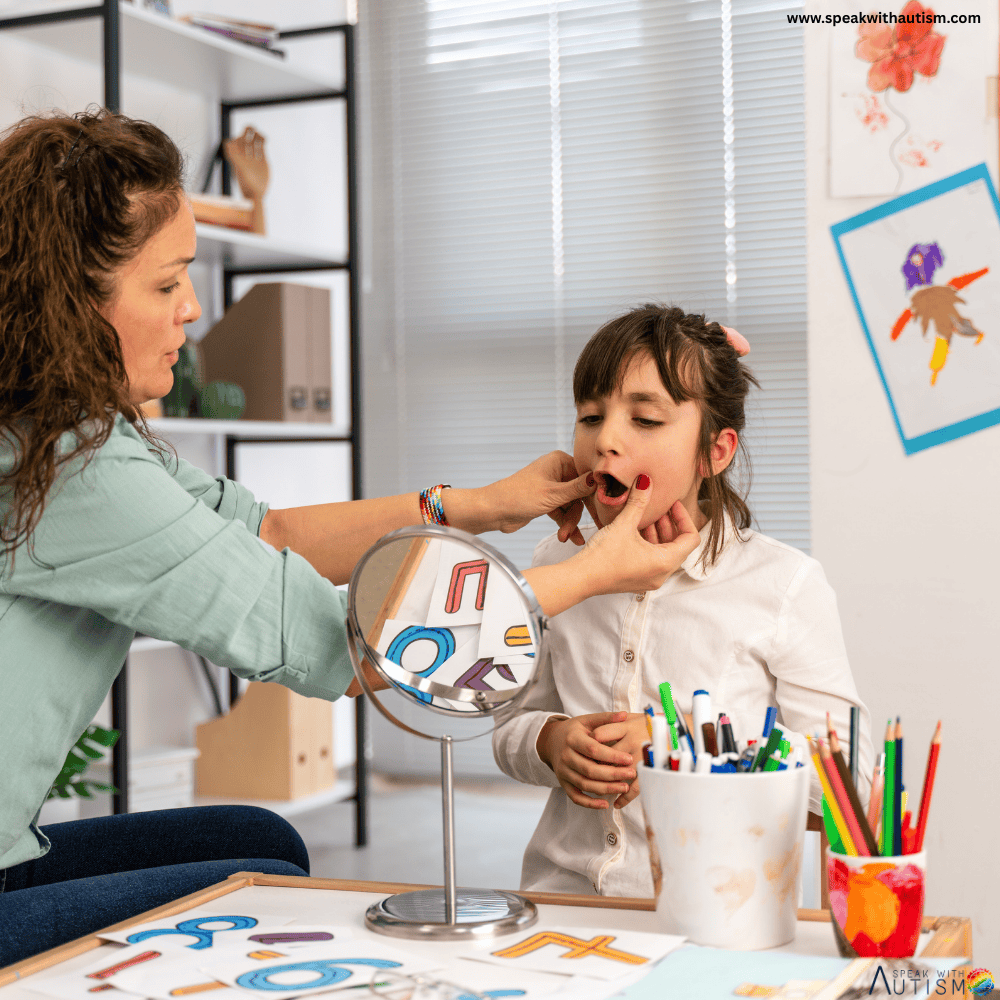Oral Motor Massages for Speech Therapy: Oral motor massages are gentle techniques used in speech therapy to improve muscle strength, flexibility, and sensory awareness in the mouth and face. These exercises help children with speech difficulties by enhancing their ability to produce sounds, chew, and control oral movements. Below is a detailed guide to performing these massages.
Table of Contents
General Guidelines for oral motor massage
- 🕒Duration: 10–15 minutes total (1–2 minutes per massage).
- Optional Supplies: Use doctor-approved coconut oil or baby-safe lotion for smoother movements.
- Hygiene: Ensure hands are clean before starting to prevent infections.
10 Oral Motor Massages for Speech Therapy
1. Cheek Massage
🟢 Purpose: Relaxes cheek muscles for better speech movement.
Steps:
- Gently place your fingers on the child’s cheeks.
- Make circular movements with light pressure.
- Continue for 1–2 minutes on both sides.
2. Lip Rub
🟢 Purpose: Stimulates lips and helps with closure for speech sounds.
Steps:
- Place your thumbs and index fingers on both sides of the lips.
- Rub gently from side to side.
- Do this for 30 seconds – 1 minute.
3. Jaw Massage

🟢 Purpose: Loosens jaw muscles for better chewing and sound production.
Steps:
- Place fingers under the jaw (near the angle of the jaw).
- Apply light pressure in upward strokes.
- Massage both sides for 1 minute.
4. Gum Rub

🟢 Purpose: Increases sensory awareness inside the mouth.
Steps:
- Wash hands thoroughly.
- Use clean fingers to gently rub the child’s gums in up-down motion.
- Focus on both upper and lower gums.
- Do for 30 seconds each side.
5. Tongue Press (Only if the child allows)

🟢 Purpose: Helps activate tongue strength.
Steps:
- Gently press the center of the tongue with a clean finger or soft spoon.
- Ask the child to push against the pressure.
- Hold for 3–5 seconds, repeat 3 times.
6. Chin Tap
🟢 Purpose: Activates jaw and mouth opening reflex.
Steps:
- Use 2 fingers to gently tap the chin.
- Tap in a rhythmic way (about 1 tap per second).
- Do 10–15 gentle taps.
7. Side-to-Side Lip Massage

🟢 Purpose: Improves lip flexibility.
Steps:
- Hold both corners of the child’s lips.
- Gently stretch lips from left to right.
- Repeat this 5–6 times.
8. Forehead to Chin Stroke
🟢 Purpose: Promotes relaxation and downward movement.
Steps:
- Start from the middle of the forehead.
- Move hands downward to the chin, like a soft sweep.
- Repeat 3–5 times slowly.
9. Ear to Mouth Rub
🟢 Purpose: Stimulates facial nerves for speech.
Steps:
- Place fingers near the ear.
- Slowly massage in a line from ear toward mouth.
- Do this on both sides 3–4 times.
10. Smile Stretch
🟢 Purpose: Builds muscle memory for smiling sounds like “ee.”
Steps:
- Hold the corners of the child’s lips.
- Gently pull into a smile shape.
- Hold for 3–5 seconds, release.
- Repeat 3 times.
✅ Oral Motor Massage Tips for Parents:
- Talk to your child while massaging — it creates comfort.
- If your child resists, stop and try again later — never force.
- Best time: after bath or before bedtime when child is calm.
- If any discomfort or skin reaction occurs, discontinue and consult your doctor.
Frequently Asked Questions (FAQ’s): Oral Motor Massages for Speech Therapy
What are oral motor massages, and why are they used in speech therapy?
Oral motor massages are therapeutic techniques that stimulate and strengthen the muscles of the face and mouth. They are used in speech therapy to improve articulation, chewing, and swallowing by enhancing muscle coordination and sensory awareness.
Can I perform Oral Motor Massages for Speech Therapy at home without a therapist?
Yes, parents can perform these massages at home after consulting a speech-language pathologist or pediatrician. Professional guidance ensures the techniques are safe and tailored to the child’s needs.
Are there any risks associated with Oral Motor Massages for Speech Therapy?
When done correctly, these massages are safe. However, risks include discomfort, skin irritation, or overstimulation if too much pressure is applied. Always use gentle movements and stop if the child shows discomfort.
How often should I do Oral Motor Massages for Speech Therapy?
Frequency depends on the child’s needs and therapist recommendations. Typically, 1–2 sessions daily, lasting 10–15 minutes, are effective. Consistency is key for progress.
What if my child doesn’t like the oral motor massages?
If your child resists, pause and try again later in a calm setting. Use playful distractions like songs or toys to make it fun. If resistance persists, consult a therapist for alternative strategies.
Can I use any lotion or oil for the oral motor massages?
Use only doctor-approved, baby-safe products like coconut oil or hypoallergenic lotion. Avoid products with strong fragrances or allergens to prevent skin reactions.
How soon can I expect results from oral motor massages?
Results vary depending on the child’s condition and consistency of practice. Some children show improvement in weeks, while others may take months. Regular consultation with a therapist can track progress.
Can oral motor massages help with non-speech issues, like feeding difficulties?
Yes, these massages can improve oral motor skills for chewing and swallowing, often addressing feeding difficulties alongside speech issues. A therapist can customize the plan for dual goals.
Do I need special training to perform oral motor massages?
While formal training isn’t always required, guidance from a speech-language pathologist is recommended to learn proper techniques and avoid potential mistakes.

5jd78r